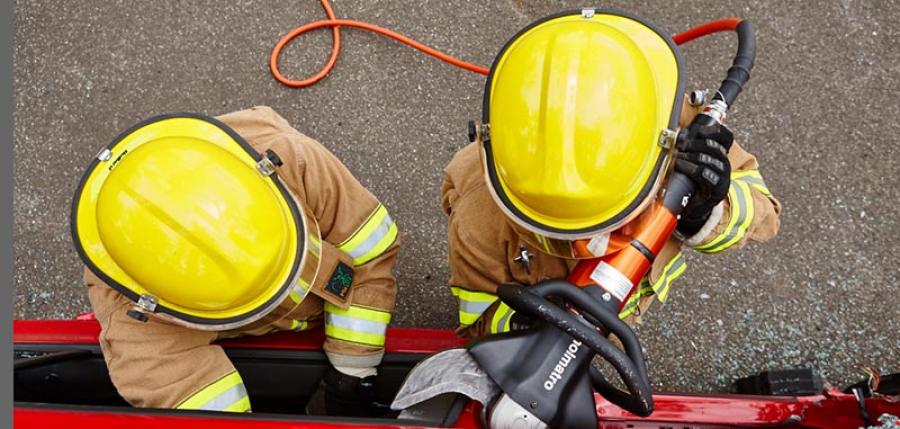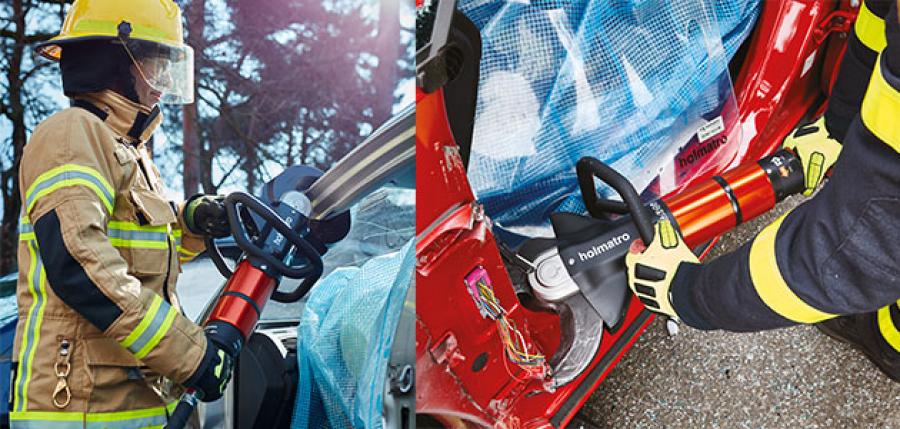Cutting performance: Theory versus Reality
When it comes to assessing performance, we are generally predisposed to being impressed by big numbers. Whether this is the megapixels on our new camera, the top speed of our latest car or the screen size on the new TV; big numbers attract and hold our attention. We must, however, look beyond the headline digits, especially where it is only a theoretical figure. In this instance, I am referring to the maximum forces attributed to hydraulic rescue tools.
In another blog I will look at hydraulic spreaders, but for now let’s focus on cutters. The maximum cutting force is without doubt the first consideration for most people when it comes to choosing cutters and is generally at the heart of a purchasing decision. Of course, there are other considerations such as build quality, weight, ergonomics and other unique features but once the conversation regarding those has ceased, it always comes back to cutting force. The question here is: what is cutting force?
Maximum theoretical cutting force
Here we go; maximum cutting force is 100% theoretical. This is because it is the result of a calculation relating to the cylinder (or piston) cross sectional area, multiplied by the pressure at which the tool works e.g. 720bar (10400psi). It is also important to understand that the maximum (theoretical) cutting force has nothing to do with the blade design, shape or geometry. Actually, if two identical cutters were placed side by side with one having standard blades and one having blades made out of wood, they would both have exactly the same maximum theoretical cutting force. So, you should now begin to understand that there is far more to the performance of hydraulic cutters than a theoretical calculation which results in a big number.
 There is more to cutting performance than a theoretical calculation resulting in a big number.
There is more to cutting performance than a theoretical calculation resulting in a big number.
Cutting performance
The real test of a cutter (or any hydraulic tool for that matter) is the actual performance. This can only ever be assessed with the tool in hand and on a late model vehicle. I have previously explained that although there are still many older vehicles on the road, the true test of modern hydraulic rescue equipment, is their performance on new cars. It is only when a cutter is used on such vehicles that an assessment of its performance can be made. In use, its weight, ergonomics and blade geometry all become apparent. This because we hardly (if ever) use the tool at waist height in a neutral standing position; we mostly use them above or below waist height. Blade geometry has more of an impact than you may think. The blades are (of course) your point of contact with the vehicle; they will determine how effective the tool is at penetrating and surrounding cuts and they will influence any tool movement during the cutting process. Remember too that how the blades are mounted to the tool, i.e. inclined (see pictures below), may provide increased ergonomics and safety.
 Working with the Holmatro Inclined Cutter offers you increased ergonomics when cutting high or low on the car and more room between the tool and the car (read: patient!), e.g. when making a relief cut in the A pillar.
Working with the Holmatro Inclined Cutter offers you increased ergonomics when cutting high or low on the car and more room between the tool and the car (read: patient!), e.g. when making a relief cut in the A pillar.
Residual capacity
It is also useful to actually assess how ‘hard’ the tool is working. This can be achieved by placing a pressure gauge between the pump and tool. This is important as it will give a visual indication of residual capacity. That is to say that if a cutter performs a cut on a modern-day vehicle using only 50-60% capacity, it has lots of reserve capacity in the event of increased vehicle strength in the coming years.
EN and NFPA norms
The other thing to keep in mind when looking at hydraulic rescue equipment is the norms which they conform to (EN and NFPA norms). These are industry tests which allow comparison to be made between manufacturers. These norms test hydraulic cutters on steel profiles such as round bar. I would urge you to ask yourself how relevant these tests are when considering the actual ‘real world’ use during vehicle extrication. Vehicle profiles are very different from round bar.
Conclusion
It is very easy to be drawn to and impressed by big numbers and in many things in life it is very often what we look for when making a purchasing decision. However, having an understanding of the numbers sometimes attributed to hydraulic rescue tools, how they are calculated and their operational relevance (or lack of) will allow you to make a more informed decision, by focussing on 'real world' performance rather than any theoretical figure. Appreciating that the cutting tests performed for norms only rely on steel profiles rather than vehicle construction means that a real assessment of a cutter's performance can only be made by using it for its true purpose.
Put simply, whilst numbers are interesting, compared to actually using the tool, they do not really tell you a great deal at all.
As ever I welcome your comments!
Ian Dubar